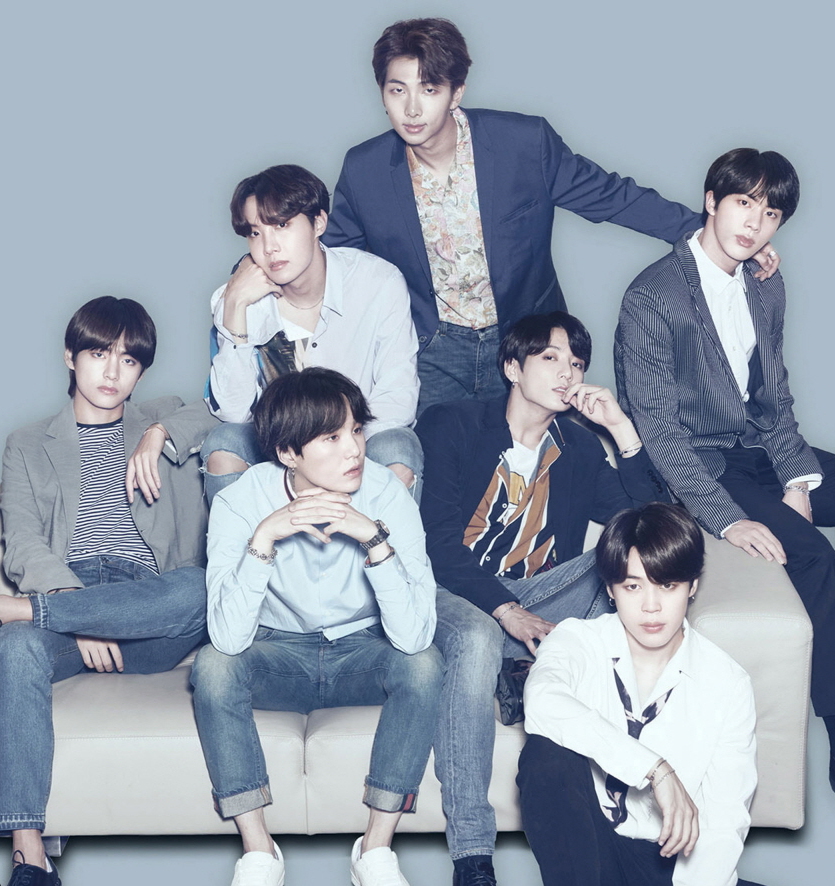Expanding one’s music taste beyond westernized music
June 10, 2019
Lately, there has been a mystifying phenomenon appearing on our electronic devices. This multi-chambered phenomenon called K-pop (Korean pop), the Hallyu or Korean culture wave, offers a variety of audiovisual performers, but most Americans only know what is trending: Gangnam Style and BTS.
Four years ago, I wandered to an unknown pop culture that was poles apart from very westernized music such as “Love Me Like You Do” by Ellie Goulding or “See You Again” by Wiz Khalifa and Charlie Puth. This genre of music was racially and culturally divergent from my own and from the rest of my 10-year-old friends. I could not possibly imagine myself listening to this music for longer than a year. Yet, four years later, I have extensive knowledge of K-pop culture. Though there are people at ETHS who have heard of K-pop, there are not that many who have appreciated it in its full nature.
Ana Ariza is a sophomore at ETHS who started listening to K-pop during the year 2010. Listening to K-pop started as an innocent curiosity and became a reappearing fascination for Ariza.
“I feel like with BTS becoming more mainstream in the United States, definitely more and more people are getting into it [K-pop],” Ariza explains.
What does it mean to appreciate K-Pop in its full nature? As I scroll through my Spotify playlist and recommendations, I find myself looking at English-speaking singers with a small population of Spanish and Korean singers. The most listened to artists are English-speaking singers like Halsey, Troye Sivan, Børns and Lana Del Rey. Appreciating different types of music (like K-Pop) in this context means to acknowledge that we as a community, as a country, are extremely America-eccentric. However, we are not only citizens of this country. We are also citizens of the world, so appreciating and understanding cultural aspects such as music that has a global reach is crucial to our American diversity.
Freshman Arly Vasquez started listening to K-pop during the summer of 2016. When asked about ETHS students knowing about K-pop, Vasquez said, “I mean not specifically what K-pop is, but like the group BTS.”
So who is BTS and why are they so popular?
BTS is a seven-member group that debuted in 2013 with their song “No More Dream.” BTS consists of seven members: Kim Seok-jin (Jin), Min Yoon-gi (Suga or Agust D), Kim Nam-Joon (RM), Jung Ho-Seok (J-hope), Park Ji-min (Jimin), Kim Tae-Hyung (V), and Jeon Jeongguk (Jungkook).
It is hard to know when and why they became so popular, but a 2017 article on CNBC gave valid points to this K-pop group’s worldwide fame.
“BTS, meanwhile, have focused on authenticity. Besides writing and producing most of their work, the group also touches on a myriad of social and political issues in their tracks, including mental health and the class divide, that others in the genre have shied away from,” according to CNBC’s Asia-Pacific digital team journalist, Cheang Ming.
But how did BTS have a global reach in such a short time? What stood out from the rest of the rising artists in the K-pop industry?
Before BTS and PSY was BoA. Kwon Bo-ah (BoA or Queen of K-pop) is considered to be the first Korean singer to reach fame outside of South Korea. BoA recorded in other languages like Japanese which helped her expand her reach beyond her country. This was the beginning of K-pop’s global fame.
Lately, BTS has become more visible to the world of the American entertainment business. BTS’ first breakthrough was in 2017 when they were nominated for the Top Social Media Artist Award. This was a major backlash to Justin Bieber fans who anticipated Bieber to win the award for the seventh time in a row.
After being the first K-pop group to be nominated for an award outside of South Korea, the rest came easy to the fans and the group itself.
Recently, the group has produced a new album called Map of the Soul: Persona with the first song Boy with Luv feat. Halsey breaking Youtube records for most views in 24 hours.
This visibility in a high-stakes market has paved a path for other rising K-pop artists such as Blackpink to reach global fame. By creating this path for rising K-pop artists, BTS has made K-pop a new music scene in the United States.
BTS have taken advantage of this visibility to collaborate with mainstream, Western artists in the American entertainment business. These artists range from Steve Aoki ‘Mic Drop and Waste It On Me, Nicki Minaj with ‘IDOL, Wale with ‘Change’, Charlie Puth with Fake Love and We Don’t Talk Anymore, Chainsmokers with Closer, Fall Out Boy with Champion, and Halsey with Boy With Luv.
These collaborations signify a unification of artists from different backgrounds and homelands.These collaborations ultimately provide the listener, who can come from different backgrounds, with a worldwide connection.
By listening to K-pop and broadening one’s music taste, one can learn and understand more from the places and people who are hard to reach due to geographic distance. ETHS students have to acknowledge that every day they affect their own perspectives on things when they plug in their headphones and press the play button. Breaking this cycle of monochromatic perspectives requires actually changing one’s routine. You don’t have to suddenly take a liking to K-pop or any other genre you haven’t heard before, but opening yourself to new ideas, new values and perspectives helps break this cycle.








